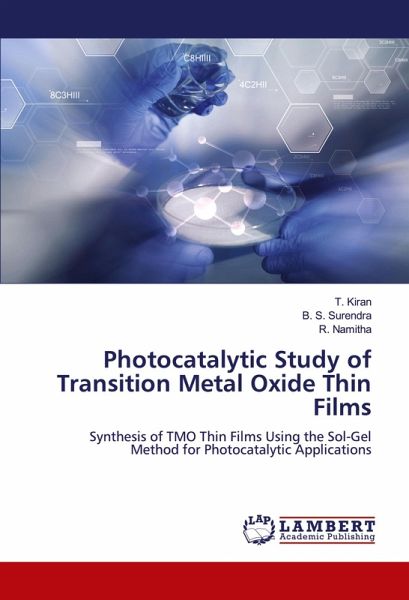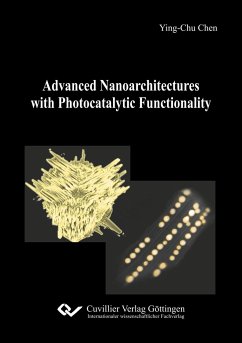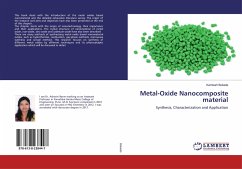
Photocatalytic Study of Transition Metal Oxide Thin Films
Synthesis of TMO Thin Films Using the Sol-Gel Method for Photocatalytic Applications
Versandkostenfrei!
Versandfertig in 1-2 Wochen
29,99 €
inkl. MwSt.

PAYBACK Punkte
15 °P sammeln!
Nowadays, thin films find important applications due to their chemically, physically, electrically, magnetically, optically, and mechanically distinct properties. These properties can be controlled by adjusting their crystal structure, composition, and size. In recent years, scholars have shown significant interest in nano-sized metal-oxide-based semiconductors because of their potential for various physicochemical applications. Among these, ZnO thin films stand out due to their efficiency, chemical stability, low toxicity, and narrow energy band gap. ZnO thin films are particularly significan...
Nowadays, thin films find important applications due to their chemically, physically, electrically, magnetically, optically, and mechanically distinct properties. These properties can be controlled by adjusting their crystal structure, composition, and size. In recent years, scholars have shown significant interest in nano-sized metal-oxide-based semiconductors because of their potential for various physicochemical applications. Among these, ZnO thin films stand out due to their efficiency, chemical stability, low toxicity, and narrow energy band gap. ZnO thin films are particularly significant for applications such as water splitting, CO2 reduction, sensors, and photocatalysis. Our research focuses on ZnO catalysts for their high catalytic efficiency and non-toxic by-products in the photocatalytic decolorization of natural pollutants. A specific and cost-effective approach is needed to reduce pollution without releasing harmful by-products. Several scholars have introduced rare earth (RE) ions into the host material lattice to enhance catalytic reactions.














